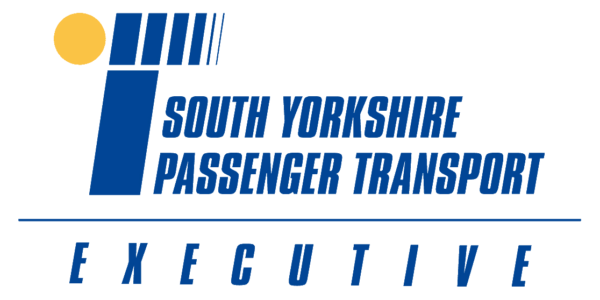Enhancing and promoting public transport
Funded by four local authorities, SYPTE takes advantage of Esri’s ArcGIS platform to coordinate and improve public transportation in South Yorkshire. The organisation’s extensive, strategic use of GIS helps it to make well informed decisions about future public transport services and publish accurate information for passengers.
The Customer
The South Yorkshire Passenger Transport Executive (SYPTE) exists to coordinate public transport in South Yorkshire. It is funded collectively by the four local authorities of Barnsley, Rotherham, Doncaster and Sheffield, but many journeys begin in South Yorkshire and extend all the way to Leeds in the north, Scunthorpe in the east and the Peak District in the south.
SYPTE has used ArcGIS to analyse bus stop locations and make recommendations that will make bus services accessible to more people
ArcGIS enables SYPTE to publish accurate information for citizens in online, paper and interactive formats, encouraging greater use of public transport
GIS is a critical tool that helps SYPTE to collaborate with four councils and multiple public transport operators to produce strategic long term plans
The Challenge
One of the founding aims of SYPTE is to encourage greater use of public transport, as well as promote more sustainable forms of transportation that ease congestion and minimise CO2 production. The organisation aspires to make public transport accessible to the widest number of people, while at the same time ensuring that services are cost effective and economically viable.
To achieve these goals, SYPTE needs to be able to provide clear and accurate information to the general public about the public transportation services that are available, in a wide range of different formats. It also needs to work with many different public and private sector partners to plan changes to the public transportation provision in the area.
GIS is the starting point for all of the information products we produce. Even when a finished product has no actual map on it, the data that is included in it has been produced using GIS and spatial analysis
Saad Masood – senior GIS analyst, SYPTE
The Solution
SYPTE started using geographic information system (GIS) technology from Esri UK over a decade ago, after Esri UK was successful in a competitive tender. Today, Esri’s ArcGIS Platform is fully embedded into almost all aspects of the organisation’s work, fulfilling three critical business functions:
1. Asset management
SYPTE relies on ArcGIS to help it record, manage and maintain its network of assets including, for example, all bus stops within South Yorkshire. Employees with the correct authorisations can access ArcGIS to add, move and retire bus stops, as well as query bus stop information. The organisation also uses Esri’s Network Analyst tool to accurately map and edit new bus routes and plot the stops along those routes, by importing electronic and paper-based data from bus operators.
2. Information production
All of the route, service and asset data contained in ArcGIS is then utilised to help the organisation produce a diverse portfolio of information products, ranging from map-based information boards in bus and train stations to maps for PDF brochures and timetables. ArcGIS also underpins an interactive route map on the web site www.travelsouthyorkshire.com that allows members of the public to search for bus stops and plan their journeys across the whole region.
“GIS is the starting point for all of the information products we produce,” says Saad Masood, senior GIS analyst at SYPTE. “Even when a finished product has no actual map on it, the data that is included in it has been produced using GIS and spatial analysis.”
3. Strategic planning
SYPTE draws on a vast amount of supplementary data, including passenger numbers and mystery shopper reports, to conduct analysis of the entire public transport network across South Yorkshire and provide recommendations for changes and enhancements. For instance, when new housing developments or new office complexes are proposed, SYPTE works with the planning authorities to analyse existing transportation routes and facilities using GIS and then model different measures to improve the accessibility of public transport from these sites.
ArcGIS helps us to plan and manage an effective public transportation service in South Yorkshire and encourage more people to use it
Saad Masood – senior GIS analyst, SYPTE
The Benefits
ArcGIS has become an invaluable tool for SYPTE, helping it to make pivotal decisions about the future of public transport in South Yorkshire. For example, the organisation aspires to provide a bus stop within 400 metres of every home, to make public transport accessible to everyone. It uses GIS to create 400 metre buffers around residential properties, identify existing bus stops within these zonal areas and see the gaps where new bus stops and routes are needed. “ArcGIS helps us to put bus stops in the right places to serve the most people,” Masood says.
The use of GIS also helps SYPTE to collaborate with councils and multiple public transport operators to produce strategic plans that consider the needs of the entire population of South Yorkshire. The organisation uses ArcGIS to monitor and model service usage and make informed decisions about how to deliver a viable, cost efficient and effective service. This coordinated approach helps to eliminate unnecessary duplication of services and minimise carbon emissions.
The high quality and accuracy of SYPTE’s information products helps the organisation to provide a good service to people living and working in South Yorkshire. There are a wide range of online, paper-based and interactive information services available, all of which help people to plan their journeys. SYPTE also uses GIS to help it plan, justify and spearhead schemes such as single tickets for journeys involving multiple bus companies that improve value-for-money and convenience for travellers.
Over the years, the increasing use of GIS within the organisation has contributed to cost and time savings. Indeed, the production of key information products has been reduced from three or four days to minutes. Some speciality maps used to be outsourced to a third party for production and these can now be created in-house, to the same quality, much more quickly and cost efficiently.



